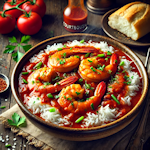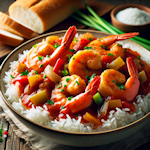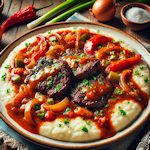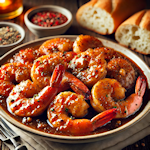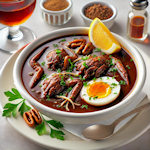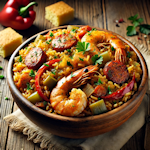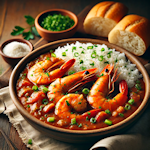Richard H. Collin was a pioneering food critic, historian, and author based in New Orleans, Louisiana. He is best known for his influential role in shaping the local food scene and documenting the region’s culinary heritage. Here's a summary of his life and career:
Early Life and Education
Richard Collin was born in Philadelphia, PA in 1932. He pursued an academic career, eventually earning a Ph.D. in history. He taught at the University of New Orleans (UNO), where he became a respected (and colorful) member of the faculty. Though a trained historian, his passion for food, particularly New Orleans cuisine, became the defining focus of his public life.
Career as a Food Critic
Collin made his mark as one of the first serious restaurant critics in New Orleans. In the early 1970s, he began writing food columns for The New Orleans States-Item and later for The Times-Picayune. He was often referred to as “The Underground Gourmet of New Orleans,” a nod to his pen name and his popular food columns that offered insightful, sometimes caustic, but always knowledgeable takes on the city’s restaurants.
His criticism was influential during a time when restaurant reviews were still relatively rare in local papers. He didn't just praise places—he was honest, sometimes brutally so, which earned him both admirers and enemies in the food industry. He was particularly known for his strong opinions and deep knowledge of classical and Creole cuisine. Readers of his columns and books will recall the term "a platonic dish" being indicative of food he found worthy of the highest praise.
Collin stopped writing restaurant criticism in the 1980s, but his body of work continued to influence later restaurant critics such as Tom Fitzmorris.
Publications
His most famous work is:
- The New Orleans Underground Gourmet (1973) – Co-authored with his wife, Dr. Rima Drell Reck, the book was a guide to restaurants in New Orleans, both well-known and obscure. It became a landmark publication in the city and is credited with helping locals and tourists alike discover hidden culinary gems. Although long out of print, the book is sought after in secondhand bookstores and online auction sites as a snapshot of the New Orleans culinary scene of the 1970s.
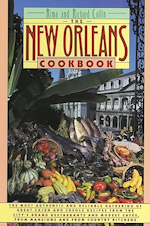
Rima and Richard Collin's The New Orleans Cookbook (1987) is still in print and features 288 recipes "carefully worked out so that you can reproduce, in your own kitchen, the true flavors of Cajun and Creole dishes." The book is easy to follow, authentic, with dishes that taste exactly as described. Additionally, readers will appreciate the fascinating historical content.
Collin also contributed to historical scholarship, particularly in European history, and was a devoted teacher at UNO.
Legacy
Richard Collin is remembered not only for his colorful writing and sharp tongue but also for his role in elevating food writing in New Orleans to a serious discipline. His work inspired a new generation of food writers and helped preserve the city's unique culinary culture at a time when it was just starting to be appreciated nationally.
After Hurricane Katrina struck southern Louisiana in August 2005, Collin relocated to Birmingham, Alabama. Collin made periodic trips to New Orleans to eat at his favorite restaurants, and his last New Orleans appearance was at the 2008 Po-Boy Fest.
He continued to reside in Birmingham until his death in 2010, but his contributions live on in the growing body of New Orleans culinary literature and the memory of those who followed his reviews religiously.

